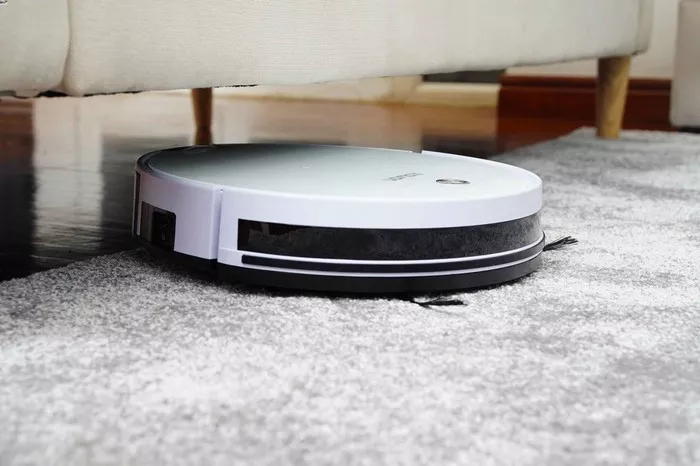In the realm of smart homes, robot vacuums have revolutionized the way we approach cleaning. These intelligent devices offer the convenience of automated floor cleaning, freeing homeowners from the daily chore of vacuuming. The effectiveness of these robotic helpers largely depends on their navigation systems, which guide them efficiently around your home, ensuring thorough and systematic cleaning.
Various navigation technologies have been developed to enhance the performance of robot vacuums, including LiDAR (Light Detection and Ranging), camera-based systems, and gyroscope navigation. Each of these technologies has its unique advantages and limitations. This article will focus on gyroscope navigation, explaining its principles, how it works in robot vacuums, and its pros and cons.
I. What is Gyroscope Navigation?
A gyroscope is a device used for measuring or maintaining orientation and angular velocity. It operates on the principle of angular momentum, which means that the gyroscope’s spinning wheel resists changes to its axis of rotation, thus maintaining its orientation. This property makes gyroscopes crucial in various applications, from aviation to smartphones, and, importantly, in robot vacuums.
In the context of robot vacuums, a gyroscope helps the device understand its orientation and movement direction. As the vacuum moves around your home, the gyroscope continuously senses any changes in direction. This information is combined with data from other sensors, such as wheel encoders, which measure the distance traveled. By integrating data from these sensors, the robot vacuum can navigate your home more effectively, adjusting its path to avoid obstacles and cover the entire floor area systematically.
See also: Vacuum Mop Explained
II. How Does Gyroscope Navigation Work?
Gyroscope-based navigation in robot vacuums typically follows certain cleaning patterns that help ensure comprehensive coverage. These patterns may include random movements, bounce navigation (where the vacuum changes direction upon hitting an obstacle), or more systematic approaches like zig-zag patterns.
Cleaning Patterns:
Random Pattern:Some gyroscope-based vacuums use a random pattern, moving in a straight line until they encounter an obstacle, then changing direction. While seemingly haphazard, this method can eventually cover the entire area but may require more time.
Bounce Navigation:In this pattern, the robot vacuum moves in a straight line until it hits an obstacle, then turns at a random angle and continues. This method is effective but can be inefficient in larger spaces.
Zig-Zag Pattern:A more systematic approach where the robot moves back and forth in straight lines, ensuring each section of the floor is covered methodically. This pattern is more efficient than random or bounce navigation.
Obstacle Avoidance:
The gyroscope, along with other sensors, helps the robot vacuum detect and avoid obstacles. When the vacuum encounters an obstacle, it changes direction to navigate around it. This capability ensures that the vacuum does not repeatedly bump into furniture or walls, which enhances both its efficiency and the safety of your household items.
Mental Mapping:
Unlike advanced navigation technologies that create detailed maps of your home, gyroscope-based systems create a “mental map” using movement data. This map is not as precise or permanent but helps the vacuum remember areas it has cleaned and those it still needs to cover. This method allows for effective cleaning over multiple passes, ensuring all areas are eventually addressed.
III. Advantages of Gyroscope Navigation
Affordability:
One of the primary advantages of gyroscope navigation is its cost-effectiveness. Gyroscope-based robot vacuums are generally more affordable than those equipped with LiDAR or advanced camera systems. This affordability makes them accessible to a broader range of consumers looking for automated cleaning solutions without breaking the bank.
Efficiency:
Gyroscope navigation enables more systematic cleaning patterns compared to purely random movements. With patterns like zig-zag navigation, these vacuums can cover the floor area more efficiently, reducing cleaning time and improving overall performance. This systematic approach ensures that the vacuum doesn’t repeatedly clean the same area while missing others.
Obstacle Avoidance:
The integration of gyroscopes and other sensors helps robot vacuums effectively avoid obstacles. By sensing changes in direction and using data from encoders, these vacuums can navigate around furniture, walls, and other objects, minimizing collisions and ensuring a more thorough clean.
IV. Disadvantages of Gyroscope Navigation
Limited Mapping:
Unlike LiDAR or camera-based systems, gyroscope navigation does not create detailed, accurate maps of your home. This limitation means the vacuum may not be as precise in its navigation, leading to potential missed spots or less efficient cleaning paths. For users seeking advanced mapping features, this can be a significant drawback.
Difficulty in Complex Layouts:
Gyroscope-based vacuums may struggle with homes that have complex layouts or numerous obstacles. The lack of precise mapping can result in the vacuum getting stuck or taking longer to navigate around tight spaces and intricate floor plans. This challenge can impact the overall efficiency and effectiveness of the cleaning process.
No Zoned Cleaning:
Advanced features like zoned cleaning or setting up restricted areas are typically not available with gyroscope navigation. Zoned cleaning allows users to designate specific areas for the vacuum to clean or avoid, offering greater control over the cleaning process. Without this capability, users may find it challenging to manage the vacuum’s cleaning areas, especially in larger or multi-room homes.
See also: Why Does My Vacuum Lose Suction
V. Conclusion
Gyroscope navigation in robot vacuums offers a practical and cost-effective solution for automated floor cleaning. By using gyroscopes to maintain orientation and track movement, these vacuums can navigate your home systematically, avoiding obstacles and covering all areas efficiently. While they may not offer the advanced mapping and precision of LiDAR or camera-based systems, gyroscope-based vacuums are an excellent choice for budget-conscious consumers seeking an effective cleaning solution.
For those prioritizing affordability and basic efficiency, gyroscope-based robot vacuums provide a reliable option. However, users who require advanced features like detailed mapping, zoned cleaning, or improved navigation in complex layouts may consider alternatives such as LiDAR or camera-based systems. Understanding the strengths and limitations of each navigation technology can help users make an informed decision, ensuring they choose the right robot vacuum to meet their specific needs.

